Principle #12 Education is a Science of Relations
“Education is the Science of Relations.––...we mean that children come into the world with a natural 'appetency,'... for, and affinity with, all… knowledge; for interest in the heroic past and in the age of myths; for a desire to know about everything that moves and lives, about strange places and strange peoples; for a wish to handle material and to make; a desire to run and ride and row and do whatever the law of gravitation permits.
Therefore we do not feel it is lawful in the early days of a child's life to select certain subjects for his education to the exclusion of others; to say he shall not learn Latin, for example, or shall not learn Science; but we endeavour that he shall have relations of pleasure and intimacy established with as many as possible of the interests proper to him; not learning a slight or incomplete smattering about this or that subject, but plunging into vital knowledge, with a great field before him which in all his life he will not be able to explore. In this conception we get that 'touch of emotion' which vivifies knowledge, for it is probable that we feel only as we are brought into our proper vital relations.” (Vol. 3, p. 222-223)
“I want my child to love learning,” is the often repeated refrain. But how do we help our children cultivate this love of learning? When I first began studying Mason, I thought that when she said “Education is a Science of Relations” she simply meant that everything is connected to everything else. That we can find the relationship with many things as we learn and grow. While that is part of what Mason is getting at, it’s not the whole picture. The science of relations is about a child building relationships—between the scholar and the material, between the teacher and the child, and between the individual and the world—aimed at cultivating a rich, full, and meaningful life.
Children are not merely making mental connections with various things, instead we want to help them come into a relationship with a great many things as whole people engaged in a full life. We want them to love and experience life in its fullness. We want our children to see, touch, taste, smell, hear with vitality and joy in a whole-bodied mentally engaging way.
Fully Alive (not Apathetic)
Today, a full life and the ability for children to come into contact with real things is at risk of extinction. The utilitarian view of education has created generations of apathetic disinterested persons hungry for the next dopamine hit. The reaction to the Industrial Revolution created institutional schools to help feed the machine with workers. But what about the person who is shuffled through such a system? Does he learn to love? Does he learn to care? Or have we become a passive generation, simply hungry for more entertainment? Mason gives us the very questions we are hungry to ask.
“The question is not, -- how much does the youth know? when he has finished his education -- but how much does he care? and about how many orders of things does he care? In fact, how large is the room in which he finds his feet set? and, therefore, how full is the life he has before him?” (Vol 3)
So our charge in embracing the principle that Education is a Science of Relations is to set our children’s feet in a very large room. We want to introduce them to a number of things and books, tangible experiences, and life-giving ideas. These will bring our children into contact with all that is true, good, and beautiful and worthy of their time and attention. If the goal is to foster a full life, then we must consider how to connect children with meaningful experiences, both in their education and daily lives.
Applying Science of Relations to Teenagers
This principle doesn’t just apply to younger children but remains foundational as they grow into adolescence. Now that we have two teenagers, I’m often asked about how it’s going, you know, because teenagers can be such a challenge. And this is where the rubber meets the road with a Charlotte Mason education. My children are so much fun. They are so interesting and they have so many interests. Many of their interests are things that we’ve cultivated but some are things they fell into through friends and books. Nothing is a big surprise other than how enjoyable it is to guide and support teens as they develop passions, try new things, and learn more about themselves.
The Science of Relations doesn’t just apply to coming into relationship with the great men of History, the beauty of Creation, the Bigness of God, it also benefits us in the commonplaces of life. The Science of Relations can mean that siblings know and love one another, that parents are supporting and challenging their children to grow and develop toward God’s goodness, and that a teen would learn more about himself as a human, made in God’s image, than I knew at the same age by looking to my peers, instead of my parents and God’s truth for guidance. To live fully, teens need to have wide interests and be introduced to things outside their immediate needs and desires.
Let the Children Live!
One typical complaint made by teachers of teens is that they don’t care to learn. A child who is disinterested in life, has no vital interests other than video games, and can’t carry on a conversation is not living a full life and grows into a disinterested young person. In order to offer this fullness, we must be more interested in the wellbeing of children than our own convenience. Screens are often given to children to pacify them, but it turns out that their whole childhood could be treated as a means to get them to leave the adults alone so that The Important Work (whatever this may be) can get done. Children are the most important work and we owe them our creativity, time, and attention to help them to become wholly formed. If children are brought into a relationship with real things, then the need for the screen is diminished because the child is occupied in work that is interesting and enriching to him. What sorts of things help children develop a relationship with the world and offer a full life?
Contact with the real things such as natural materials, natural objects, a delight in books, a living touch with the past, and genuine friendship help to foster intimacy we hope to cultivate in children and teenagers necessary for their flourishing.
Natural Materials: Things such as clay, wood, leather, yarn, string, needle and thread, paper, scissors can all offer ways for children to touch and manipulate natural materials to make beautiful or useful things to bless others. This is the handcraft part of a Charlotte Mason education, but it is to bring children into relationship with materials and show him how to use his body to serve.
Natural Objects: The natural world is full of beauty and collecting them can be an enjoyable hobby to help children start to look for these beautiful things. Natural objects can be: wild fruits and seeds, branches, feathers, nests, leaves, insect casings, cacoons etc. Contact with these natural objects informs and delights us to know from personal experience the texture, color, sounds, materials that make up the world.
Delight in a Book: Curating good books for students to read and enjoy is a part of the mother-teacher’s job. But school books and free reading books are a bit different. We want to offer our children books that overlap with their interests AND bring them into new relationships. We want the books in our home to call to them during their downtime. Let reading be a way of life, not just something we do for school
Living Touch with the Past: Living books can help bring a time period to life, but so can a trip to a museum or a building or natural wonder that helps us to feel as if we’ve entered a different period of time. Having enjoyable books along with the history spine can help round out a time period for a child and bring them into a new relationship with a group of people and a way of thinking foreign to our time. Studying the art, music, and ways of life from the past can help it come alive. Bringing children into a history museum to see how things were or how people lived is a way to help foster connections with a different time and place.
Friendship: In pursuit of a full life, let us not be buried so deep in our books that we neglect living in community with friends. Friendship for the homeschool family ought to be grounded in the local church community and from there radiate out into the broader homeschool community within 20 minutes drive. I know that there are many challenges today with finding community, but having a good church that can support your work in raising your family will allow you and your children to serve others and know that they belong. This intimacy strengthens the work you are doing to teach them how to live well and it shows them what is most important in life- which is loving God and loving others.
The Teacher as a Guide to New Relations
Instrumental to understanding the Science of Relations is realizing the role of the teacher is not to be the fount of knowledge for the child. Rather, the teacher facilitates opportunities for the child to learn for himself, study in private, develop projects, and discover new relationships as the main method for learning.
The teacher, instead of lecturing and being the source of knowledge, introduces an idea or concept to take the child from what he knows and leads him into new ideas. The teacher may amplify or illustrate to help call attention to something beautiful or worthy of consideration. Most importantly, the teacher herself is engaged, interested, and learning with the children. She brings her own questions and discoveries to the conversation. She has a relationship with the material and brings it to the children as a gift to an unsuspecting recipient.
An approach that breaks up the assembly line approach of classroom education helps awaken our scholars to being fully alive to the material because it honors their humanity. Our part is to remove obstructions, give stimulus, and act as a guide. The child will then be able to develop a relationship with all that there is in his own time and in his own way.
Conclusion
The Science of Relations is essential to a Charlotte Mason education because it requires that the student himself engage in the work at hand. The child must make the connections for himself.
Mason sums up her aim well in School Education where she shows us the breadth and length and height and depth of the possibilities for learning in this way. She says, “we personally have relations with all that there is in the present, all that there has been in the past, and all that there will be in the future––with all above us and all about us––and that fulness of living, expansion, expression, and serviceableness, for each of us, depend upon how far we apprehend these relationships and how many of them we lay hold of.” (Vol 3, p 185-6)
Reflection Questions:
What ideas have captured my child’s imagination lately?
How can I set up my homeschool day to allow my child to have time to engage with ideas more deeply? Notebook work? Getting an atlas out and looking for places we’ve read about together? Time to reflect and orally narrate then follow up on a question that came up from the reading?
What are ways that our homeschool day encourages my child to rush through his/her work? How can I help him/her slow down and think back to what was read?
Do I have the opportunity to provide a range of ideas each week or are we in a season of essentials? How can I include more life-giving ideas apart from reading, writing, and math to help those skills be part of a full life and not just drill and kill?
What are relationships that are difficult for our family to cultivate? (Nature? Music? Art? Poetry? History? Natural materials? Friendships?)
What is one relationship I would like to focus on in the coming month?
**If you want to be effective with your Nature Study work, check out my Nature Study Hacking Guides at www.naturestudyhacking.com. Learn how to get outside and use those lovely nature journals.**
20 Principles of a Liberating Education:
#2 The Good and Evil Nature of Children
#3 Parents are in Charge and Children Must Obey
#4 Limits to Our Authority as Parents and Educators
#5 Education is an Atmosphere, a Discipline, a Life| a primer
#9 Feeding the Hungry Mind
#10 From Bucket Heads to Bright Minds| The True Role of Teacher & Learner
#11 Drop the Timeline Song| Education is Cultivating Wisdom Through Nourishing Ideas
#12 The Science of Relations (You are here)
Bibliography for further reading:
In Vital Harmony by Karen Glass
Start Here, a Journey through Mason’s 20 Principles by Brandy Vencel
Philosophy of Education by Charlotte Mason









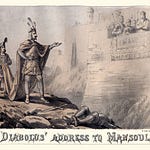
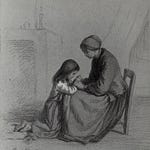
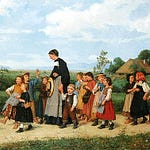
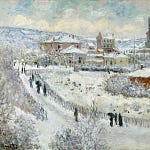
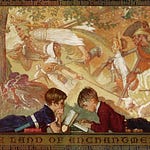
Share this post